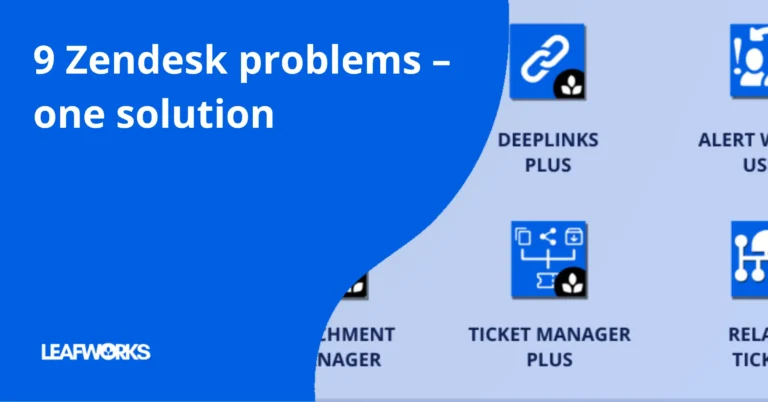Customer service is more than just answering customer queries. Good customer service is a central component of successful customer relationships – from the first question to long-term loyalty. In this article we show
- what customer service means
- what tasks it involves
- which KPIs are important and
- how companies can make the difference with the right tools and processes.
What is Customer Service?
Definition: Customer Service
Customer service is the support and care that companies offer their customers before, during and after the purchase of a product or service in order to create a positive customer experience.
Customer service refers to all measures with which companies support customers before, during and after the purchase. The aim is to solve problems, answer questions and create a positive overall experience.
Customer Service is:
- a link between product, brand and customer experience
- a feedback channel for improvements
- a competitive factor
The formats range from personal contact to self-service:
- Telephone or email support
- Live chats and messaging
- Knowledge databases and help centers
- Automated systems such as chatbots
According to the „State of the Connected Customer“ study by Salesforce, 84% of customers consider their experience with a company to be just as important as its products or services. In an international survey, Zendesk found that over 60% of customers drop out after just one bad experience. At the same time, 64% of managers surveyed stated that customer service has a direct impact on their company’s growth.
Tasks in customer service
The central tasks in Customer Service can be divided into five core areas:
- Process requests: Provide information, clarify questions
- Solve problems: Addressing complaints and technical difficulties
- Accompanying customers: through onboarding, usage and after-sales
- Recording feedback: Systematically record and use feedback
- Improve service: Optimize processes, conduct training
Many companies – especially in the SME sector – are still stuck in reactive service models. The shift to a proactive, technology-supported approach is crucial in order to inspire customers in the long term.
KPIs for measuring success
How good customer service actually is can be measured using key performance indicators. For this purpose, there are various KPIs (Key Performance Indicators) that provide information on how good your customer service actually is. Here is an overview of the most important methods for measuring success in customer service:
CSAT (Customer Satisfaction Score): How satisfied are your customers?
The CSAT measures customer satisfaction with a product, service or interaction. Customers are asked how satisfied they are on a scale and an average value is calculated from their answers.NPS (Net Promoter Score): Would your customers recommend you to others?
The NPS is a key figure for customer loyalty that measures the extent to which customers are willing to recommend your company to others. The NPS is determined by asking customers how likely they are to recommend your company on a scale of 0 to 10.FCR (First Contact Resolution): How many inquiries are resolved on first contact?
The FCR is the rate at which customer inquiries are resolved on the first contact without the need for follow-up contacts. A high FCR rate is an indicator of efficient customer service.AHT (Average Handling Time): How much time does the service take per inquiry?
The AHT is the average handling time of customer inquiries. This includes all inquiries from the initial contact to the resolution of the problem. A lower AHT indicates faster and therefore potentially better customer service. – CES (Customer Effort Score): How much effort does the customer have to put in until a solution is found?
The CES measures the effort that the customer has to make in order to obtain a solution to their problem. A low CES indicates user-friendly and effective customer service.
It is also important to analyze customer feedback across different channels in order to obtain a holistic picture of customer satisfaction. Tip: Modern tools such as Zendesk enable these values to be recorded automatically – and help with data-based optimization. In addition, qualitative feedback via surveys, ratings or interviews is essential in order to analyze the customer experience holistically.
Examples of excellent customer service
Jelmoli: With Leafworks and Zendesk, the Swiss premium department store provider was able to increase its customer satisfaction to 92% – in just four months. Fewer queries, clearer processes, better results. To the Jelmoli reference
Staffbase: After taking over a company with its own support structure, Staffbase had to merge different systems. The introduction of Zendesk created a unified experience – with a customer satisfaction rate of 97%. To the Staffbase reference
Zalando: The 100-day return policy, free returns and cross-channel communication make the online retailer a prime example of service excellence, customer satisfaction and loyalty in practice. Policies like these demonstrate a deep understanding of customers’ needs and prove that good customer service involves proactively managing customer relationships, using advanced technologies and constantly striving for improvements to not only satisfy customers, but to delight and retain them in the long term.
Common errors in customer service
Even committed teams make mistakes – especially when processes or tools are inadequate. An overview of the most common stumbling blocks:
Lack of multichannel support: Many companies fail to address customers across multiple channels – for example via email, telephone, chat or social media. An omnichannel strategy improves accessibility and consistency in customer dialog.
Long waiting times: Often caused by too few staff or inefficient processes. Chatbots and intelligent routing systems can provide relief here – as can forward-looking personnel planning.
Lack of customer feedback: Without regular feedback, there is no basis for real service improvement. Surveys, direct interviews and automated monitoring can help.
Insufficient training: A team without knowledge or communication skills is wasting potential. Training should not only cover product knowledge, but also soft skills.
Complaints without a solution: If there is no clear process for complaints, the risk of negative reviews increases. Transparent processes and a fixed escalation path are essential.
Neglected employee satisfaction: Satisfied teams provide better service. Appreciation, development opportunities and a good working atmosphere pay off twice over.
All of these factors have a direct impact on the customer experience – and can be specifically improved with the right strategy. have a direct impact on the customer experience – and can be specifically improved with the right strategy.
Trends: This is what the customer service of the future will look like
The customer service of the future will be characterized by an even stronger customer focus and the targeted use of innovative technologies. Customers expect not only quick help, but also a deep understanding of their individual needs – in real time, via the channel of their choice and with minimal effort.
- Artificial intelligence and automation: AI-supported systems acting as assistants/co-pilots or independent AI agents analyse issues and forward them efficiently or answer simple questions directly. Chatbots with natural language processing take the strain off service teams and enable 24/7 support.
For a broader look at how modern technologies are shaping support operations, see our guide to AI in customer service.
- Omnichannel communication: Switching between email, social media, chat or telephone must work seamlessly. Companies that think across channels score points with consistency and availability.
- Proactive support and predictive care: Data analysis and feedback collection can identify problems before they escalate. Proactive complaint management strengthens trust and reduces escalations.
- Data protection and data security: As technology increases, so do security requirements. Customers expect GDPR-compliant, transparent processes for handling personal data.
- Artificial intelligence and automation: AI-supported systems acting as assistants/co-pilots or independent AI agents analyse issues and forward them efficiently or answer simple questions directly. Chatbots with natural language processing take the strain off service teams and enable 24/7 support.
According to a PwC study, 73% of customers believe that customer experience is a decisive factor in their purchasing decision – even more so than price. But don’t worry, you don’t have to reinvent the wheel. Those who rely on proven strategies in the areas of customer service, customer experience management (CXM) and customer relationship management (CRM) today can inspire tomorrow – efficiently, intelligently and customer-centrically.
Conclusion: Customer service as a competitive advantage
Good customer service is not a cost factor, but a lever for success. Those who listen, understand and act in a targeted manner create trust – and retain customers in the long term. Companies that invest in modern tools, training and structured processes set new standards. Would you like to further develop your customer service? Leafworks will support you with experience, technology and a clear view of what is feasible.
FAQ on Customer Service
What does Customer Service do? Customer Service supports customers before, during and after the purchase – for example with questions, problems or complaints. The aim is to create a consistently positive experience. It is crucial for customer satisfaction, brand loyalty and long-term business success.
With KPIs such as CSAT (satisfaction), NPS (recommendation), FCR (first-time resolution rate), AHT (processing time) and CES (customer effort). These metrics help to objectively evaluate and specifically improve service quality.
Customer Service solves acute issues – Customer Care also aims to build long-term relationships. It is about proactively exceeding customer expectations instead of just reacting to requests. The two complement each other.
A customer service agent answers questions, helps with problems and communicates with customers via various channels. The role is often the first human point of contact – and therefore has a decisive influence on the brand experience.
The tasks include: Answering inquiries, solving problems, obtaining feedback, supporting customers and improving processes. Modern customer service teams are increasingly working across channels and based on data.
Zendesk is a platform for omnichannel support, self-service, automation and evaluation. Companies use Zendesk to standardize processes, increase efficiency and measurably improve customer satisfaction.
Trends include AI-supported chatbots, omnichannel communication, proactive support and data protection. More and more companies are relying on automated processes – combined with human proximity.




